
This is a list of properties and historic districts in Missouri on the National Register of Historic Places. There are NRHP listings in all of Missouri's 114 counties and the one independent city of St. Louis.

Washington State Park is a public recreation area covering 2,147 acres (869 ha) in the central eastern part of the state of Missouri located on Highway 21 about 14 miles (23 km) northeast of Potosi on the eastern edge of the Ozarks. The state park is noted for its Native American rock carvings and for its finely crafted stonework from the 1930s.

Arrow Rock State Historic Site is an open-air museum encompassing a geographic formation and a portion of the village of Arrow Rock, Missouri. The park is part of the Arrow Rock Historic District, a National Historic Landmark, and commemorates the history of the area as a key stop on the Santa Fe Trail.

West Vernor–Junction Historic District is a commercial historic district located along West Vernor Highway between Lansing and Cavalry in Detroit, Michigan. The district includes 160 acres (0.65 km2) and 44 buildings. The district was listed on the National Register of Historic Places in 2002.
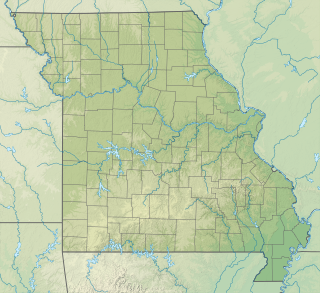
Knob Noster State Park is a public recreation area covering 3,934 acres (1,592 ha) in Johnson County, Missouri, in the United States. The state park bears the name of the nearby town of Knob Noster, which itself is named for one of two small hills or "knobs" that rise up in an otherwise flat section of Missouri. Noster is a Latin adjective meaning "our"—therefore, Knob Noster translates as "our hill." A local Indian belief stated that the hills were "raised up as monuments to slain warriors." The park offers year-round camping, hiking, and fishing and is managed by the Missouri Department of Natural Resources.

This is a list of the National Register of Historic Places listings in Rock County, Minnesota. It is intended to be a complete list of the properties and districts on the National Register of Historic Places in Rock County, Minnesota, United States. The locations of National Register properties and districts for which the latitude and longitude coordinates are included below, may be seen in an online map.

Bethel Historic District is roughly bounded by Liberty, King, 1st, and 4th Sts. in Bethel, Missouri. Construction of the town, which was for over thirty years a successful experiment in communal living, began in 1844. The leader of the community was a German emigrant, charismatic autocrat Dr. William Keil. After his death, the communal structure gradually collapsed and the communal property was split among the community members. The district was added to the National Register of Historic Places in 1970. There are twenty-six contributing properties.
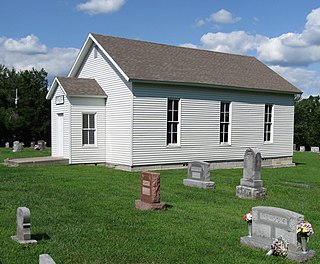
Bond's Chapel Methodist Episcopal Church, also known as Bond's Chapel, is a historic Methodist Episcopal church located near Hartsburg, Missouri. It was built in 1883–1884, and is a simple rectangular frame building, set on piers composed of creek rock and mortar. It measures 24 feet by 33 feet and has a front gable roof and vestibule.

The John C. Schricker House is a historic building located in the West End of Davenport, Iowa, United States. It was individually listed on the National Register of Historic Places in 1983. The following year, it was included as contributing property in the Riverview Terrace Historic District.
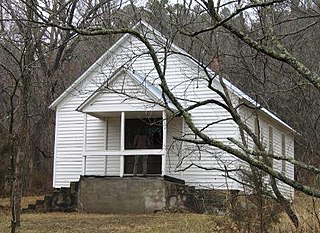
Lower Parker School, also known as District #73 School, is a historic one-room school and national historic district located near Salem, Dent County, Missouri. It was built in 1905 or 1906, and is a one-story, gable-front rectangular frame building measuring approximately 500 square feet. Also located in the district are the remains of two privies.

New Lebanon Cumberland Presbyterian Church and School is a historic Presbyterian church and school located on Route A in New Lebanon, Cooper County, Missouri. The church was built in 1859, and is a one-story, brick building with restrained Greek Revival style detailing. The cross-gable roof is topped by a small clapboarded belfry. The school is a small one-story frame building sheathed in clapboard.

Chicago, Rock Island and Pacific Railroad-Wilton Depot is an historic building located in Wilton, Iowa, United States. The Mississippi and Missouri Railroad built the first rail line in 1855 in what would be called Wilton Junction. The railroad became the Chicago, Rock Island and Pacific Railroad (CRI&P) a few years later. A wooden frame depot and a separate freight facility served the community. The railroad placed their repair and maintenance center in Wilton, and it remained here until 1881 when they started to move operations to Davenport and Muscatine. Rail service continue to increase along the CRI&P, which necessitated a new depot in Wilton. This single-story, brick Romanesque Revival structure was completed in 1898. Six passenger trains stopped in Wilton in 1911, and by 1922 same-day service to and from Chicago began. While the number of freight trains passing through town numbered five or six by 1947, the number of passenger trains declined to one in 1948. The depot received part-time service from 1963 to 1974, when the depot closed.

The West Liberty Commercial Historic District in West Liberty, Iowa, United States, is a historic district that was listed on the National Register of Historic Places in 2002. At that time, it included 41 contributing buildings, six other contributing structures, and eight non-contributing buildings.

The State Center Commercial Historic District is a nationally recognized historic district located in State Center, Iowa, United States. It was listed on the National Register of Historic Places in 2002. At the time of its nomination it contained 36 resources, which included 31 contributing buildings, two contributing structures, and three non-contributing buildings. The historic district covers the town's central business district. State Center is located at the highest point in Marshall County, midway between Marshalltown and Nevada. The town was established by the Cedar Rapids & Missouri Railroad on 80 acres (32 ha) of land in 1863. It was initially named "Centre Station," but William Barnes, the first railroad agent, changed the town's name to "State Centre."

Rock Fountain Court Historic District, also known as Melinda Court, is a historic traveler's accommodation and national historic district located at Springfield, Greene County, Missouri. The district encompasses 10 contributing buildings and 1 contributing structure associated with a tourist court. The district developed between about 1945 and 1952, and includes 9 tourist cabins and a large frame garage. The cabins are of frame construction and faced in masonry ranging from all dark sandstone, to white limestone accented with red brick.
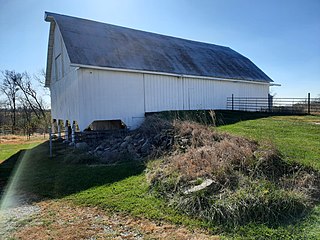
Isiah Mansur Farmstead Historic District, also known as Rock Hall, is a historic home and farm and national historic district located near Richmond, Ray County, Missouri. The district encompasses eight contributing buildings, one contributing site, and three contributing structures on a farm developed between the mid-19th and mid-20th centuries. The contributing resources include the main farmhouse, a buggy house, a large barn, an engine house (c.1900), a small barn, a brooder house, a hen house, a smokehouse, a house well, a field well, and a wellhouse. The main farmhouse is a two-story, five bay, frame I-house.

Harper School, also known as Harper Community Building, is a historic one-room school located at Harper, St. Clair County, Missouri. It was built about 1875, and is a one-story, one-room frame schoolhouse with twin entrances. It measures 20 feet wide by 32 feet long and has a gable roof with shed roof porch. Also on the property is a contributing frame privy (1935). The school closed in 1952 and houses a community centre.

The Oxford Commercial Historic District is a nationally recognized historic district located in Oxford, Iowa, United States. It was listed on the National Register of Historic Places in 1997. At the time of its nomination it consisted of 20 resources, which included 16 contributing buildings and four non-contributing buildings. This district reflects a typical central business district found in a Midwest town. It represents a transitional period from a frontier town to a settled community, and from the horse as the primary means of transportation to the automobile and mechanized farming. Most of the buildings in Oxford's business district were constructed between 1883 and 1917. Some replaced the wood frame structures from the town's frontier days, while others replaced those destroyed by a major fire that consumed the north side of the district in 1890. They are one to two stories in height, and their exteriors are composed of common brick. While simple in composition, many feature ornate decorative cornices. The Italianate and Romanesque Revival styles dominate.
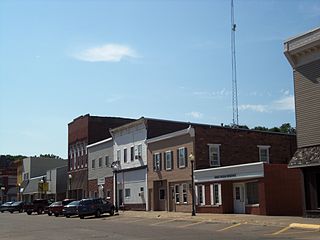
The Wilton Commercial Historic District is a nationally recognized historic district located in Wilton, Iowa, United States. It was listed on the National Register of Historic Places in 2016. At the time of its nomination it consisted of 47 resources, which included 32 contributing buildings, one contributing structure and 14 non-contributing buildings. Wilton got its start when the Mississippi and Missouri Railroad, later the Chicago, Rock Island and Pacific, was surveyed through this area in 1853. It was named for Wilton, Maine, the hometown of one of the founders.



















